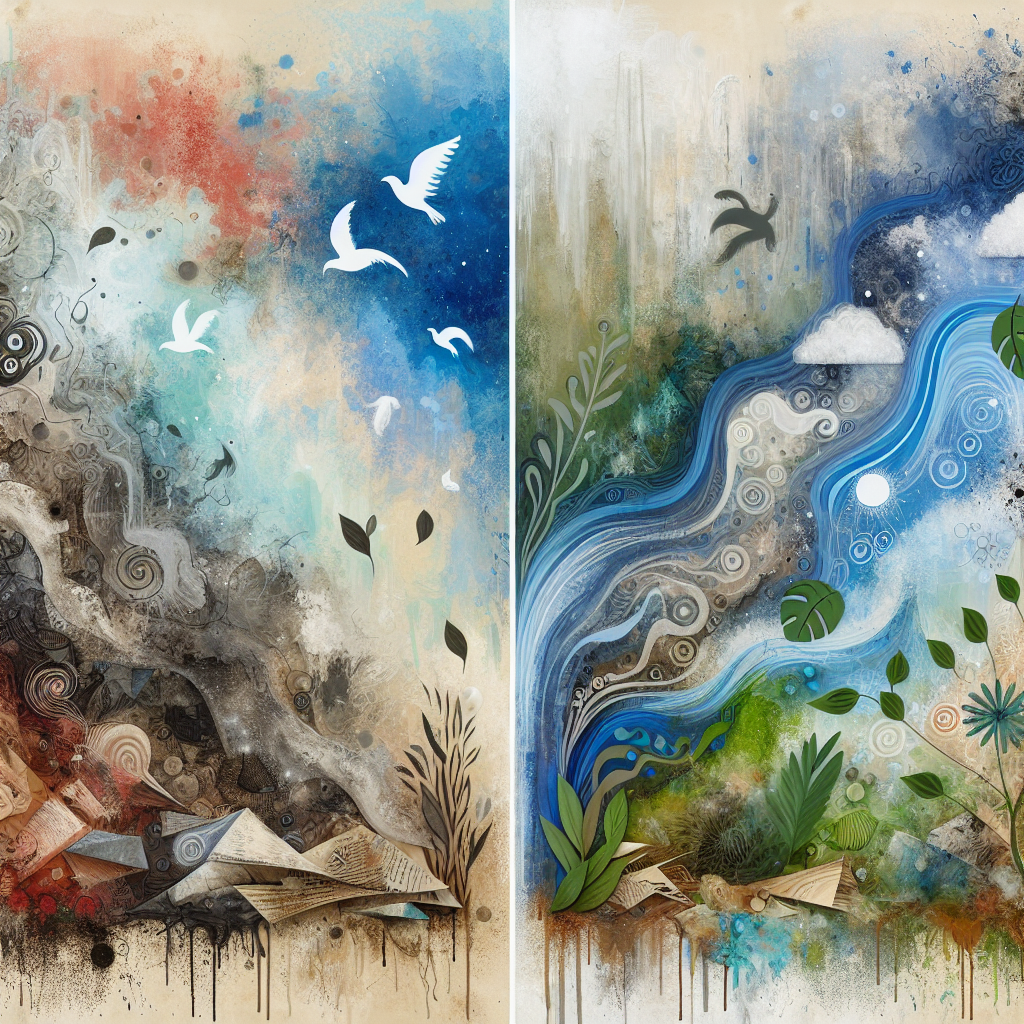Introduction
In an era where stress permeates our daily lives, the need for environments that foster peace and healing has never been more crucial. Imagine walking into a space that immediately calms your racing mind and soothes your anxious spirit—a sanctuary amidst the chaos of modern living. This concept—From Chaos to Calm: Creating Healing Environments—is not just a trend; it’s an essential strategy for enhancing emotional, physical, and mental well-being.
Research has shown that our surroundings deeply influence our mood, productivity, and health. With the right elements in place, we can transform chaotic, overwhelming environments into tranquil spaces that promote healing and serenity.
In this article, we will explore the principles behind creating healing environments and provide practical insights to help you cultivate your own personal oasis, whether at home, work, or in community spaces.
Understanding Healing Environments
What Are Healing Environments?
Healing environments encompass physical, emotional, and spiritual aspects that lead to improved health and wellness. They are designed to support healing by mitigating stress and promoting relaxation.
Key Principles of Healing Environments
- Natural Elements: Incorporating elements such as water features, plants, and natural light can help ground us in our surroundings.
- Soundscapes: The right auditory environment can either calm or irritate. Understanding how to utilize sound effectively is crucial.
- Color Psychology: Colors evoke emotions. Choosing the right palette can significantly impact one’s mood.
- Space Design: Layout and flow in a space play a significant role in how individuals experience their environment.
Case Study: The Impact of Nature on Well-Being
A landmark study by Ulrich (1991) revealed that patients recovering from surgery in rooms with natural views experienced less pain and sought fewer pain medications than those with views of brick walls. This exemplifies how integrating natural elements can pivot healthcare environments from chaos to calm, underscoring the effectiveness of biophilic design principles.
Analysis of the Case Study
This case study illustrates the profound impact of the physical environment on mental and physical recovery. By prioritizing nature in healthcare settings, institutions can enhance patient outcomes, underscoring the importance of the concept From Chaos to Calm: Creating Healing Environments.
Creating Your Healing Environment
Personal Spaces: Home and Office
At Home
-
Decluttering: A cluttered space leads to a cluttered mind. Invest time to organize and simplify.
-
Incorporating Plants: Adding houseplants improves air quality and provides a sense of tranquility.
- Creating Zones: Designate areas for work, relaxation, and socializing to give your mind a clear sense of space.
At the Office
-
Flexible Workspaces: Create areas where employees can choose to collaborate or work quietly, allowing for personalization.
-
Break Rooms with Natural Light: Ensure break areas have large windows or access to outdoor spaces.
- Mindfulness Rooms: Designate quiet, low-lit rooms where employees can unwind and recharge.
Community Spaces: Healthcare & Public Areas
Designing for Healing
-
Waiting Rooms: Use soothing colors, comfortable seating, and nature-inspired art to create a calming atmosphere.
-
Outdoor Spaces: Gardens or green roofs can help patients, visitors, and staff reconnect with nature.
- Art in Healing Spaces: Incorporate local art that resonates emotionally to enhance the atmosphere further.
The Science Behind Healing Environments
Psychological Impact
Research has demonstrated that the environment can directly affect our mental health. For instance, a study conducted by Kaplan and Kaplan (1989) showcases the essence of restorative environments—spaces that allow individuals to recover from mental fatigue and stress.
Physical Health Benefits
The connection between environment and physical health is also significant. A survey from the World Health Organization indicates that environments rich in greenery result in lower blood pressure, reduced stress levels, and enhanced overall well-being.
Tables of Critical Points and Data
| Element | Impact | Application in Spaces |
|---|---|---|
| Natural Elements | Reduced stress and improved mood | Incorporate plants and light |
| Soundscapes | Influences emotional state | Use calming music or natural sounds |
| Color Psychology | Affects perception and behavior | Create artwork with calming colors |
| Spatial Design | Enhances flow and functionality | Optimize layout for movement |
Conclusion
Creating healing environments—From Chaos to Calm: Creating Healing Environments—is not just about aesthetics; it’s a holistic approach that considers how our spaces influence our mental, physical, and spiritual well-being. By incorporating natural elements, understanding the power of sound and color, and designing spaces that reflect comfort and healing, we can foster environments that nurture not only ourselves but also those around us.
As you embark on your journey to create your healing environment, remember that small changes can lead to profound effects. Whether it’s rearranging your furniture, introducing plants, or curating a soundscape that inspires calm, each choice contributes to a larger framework of wellness.
FAQs Section
1. What are some simple ways to create a healing space at home?
You can start with decluttering your space, incorporating plants, and using softer lighting.
2. How can sound affect my environment?
Sound can impact your mood and stress levels. Integrating calming music or natural sounds can promote relaxation.
3. What colors are best for a healing environment?
Soft blues, greens, and earth tones are generally considered calming and can help create a peaceful atmosphere.
4. How can businesses implement healing environments?
Flexible workspaces, mindfulness rooms, and incorporating nature into the design can substantially enhance the work environment.
5. Is there research supporting the benefits of healing environments?
Yes, numerous studies highlight the correlation between peaceful environments and improved health outcomes, including reduced anxiety and enhanced recovery rates.
Creating environments that nurture healing and serenity is a journey worth taking—a movement from chaos to calm that can transform lives. Are you ready to take that step? Your healing sanctuary awaits, just a few mindful changes away.

